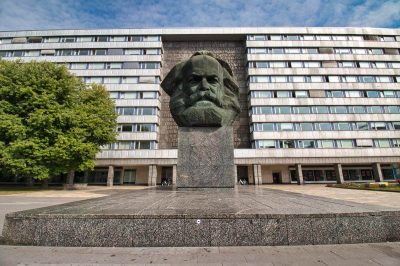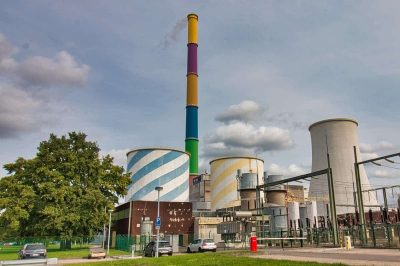Chemnitz likes to call itself the city of modernity. There are many Chemnitz sights and numerous buildings from the time when Chemnitz was still called Karl-Marx-Stadt. But hardly anything stands out as much as the buildings from the modern era. And indeed, there are more modernist buildings here than in almost any other city in Germany. Even if the Chemnitz Modernism buildings cannot be attributed to the Bauhaus, some of them have been very distinctive and trend-setting. That’s why we want to take you on a walk through Chemnitz Modernism.
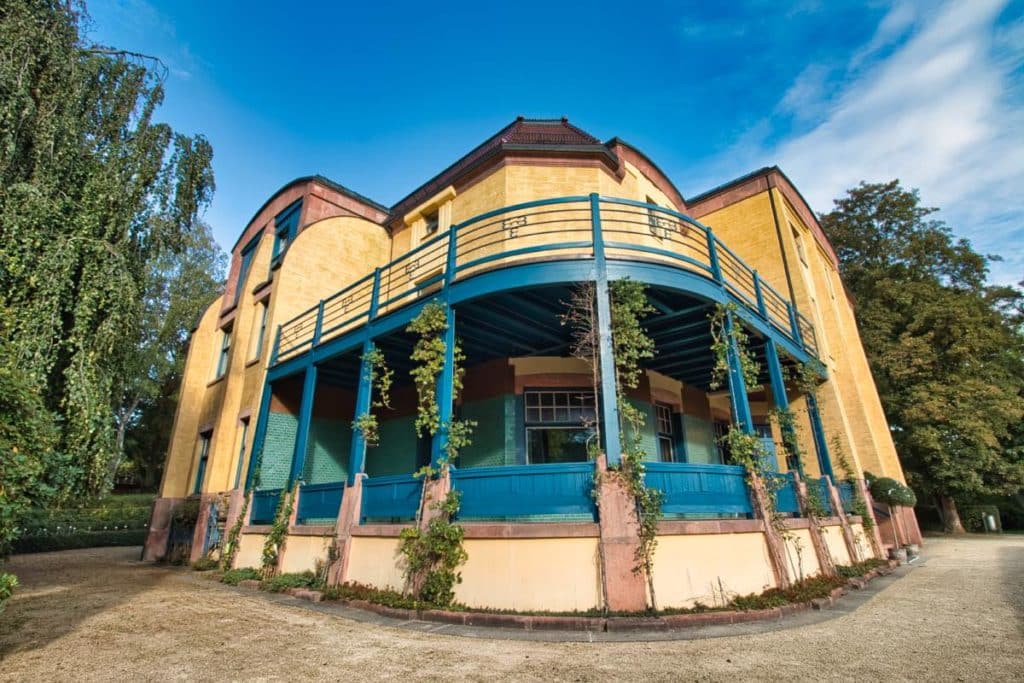
Villa Esche
The Villa Esche is one of the most important precursors of modernist architecture in Chemnitz. It was designed in 1902 by Henry van der Velde for the textile manufacturer Herbert Eugen Esche. Van der Velde became the founder and director of the School of Arts and Crafts in Weimar in 1905, from which the Bauhaus emerged after the First World War. In Villa Esche, one can see some of the principles of the Bauhaus. It is a total work of art and its form is committed not only to beauty but also to function.
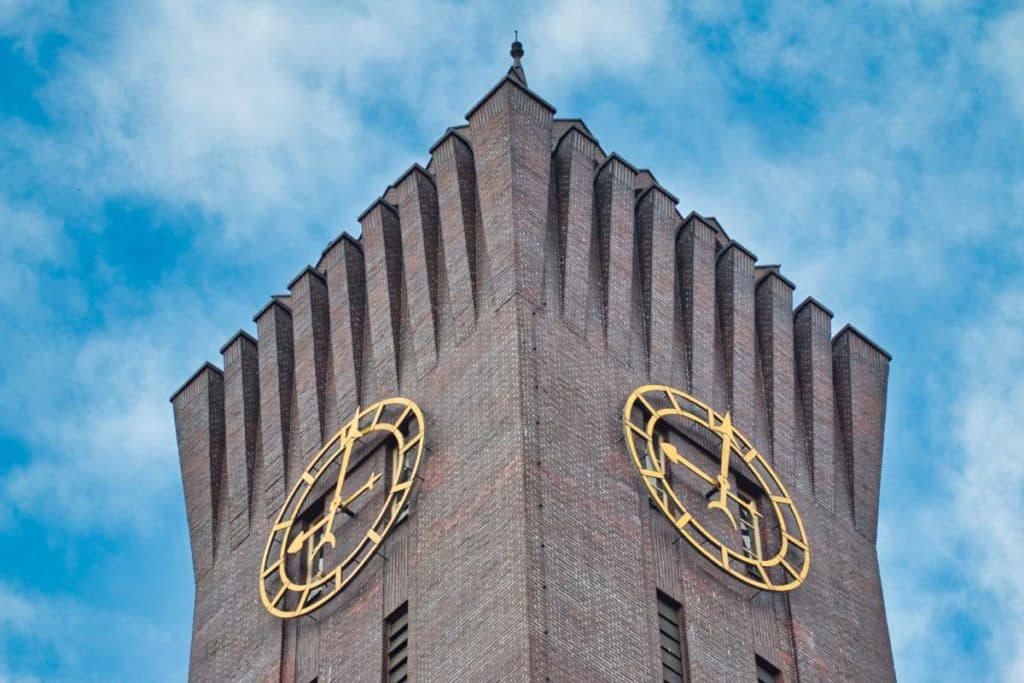
Wirkbau
One of the most impressive and beautiful buildings is the so-called Wirkbau. Especially the bell tower with its striking shape immediately catches the eye. It was erected with the surrounding buildings in 1927 according to plans by architect Erich Basarke. Machines for textile production were still built here until 1993. In recent years, the site has been renovated and revitalized. Thus, it represents the Chemnitz Moderne like hardly any other. Meanwhile, there are about 50 companies and educational institutions with about 1400 employees here and the restaurant NOMAD invites you to eat.
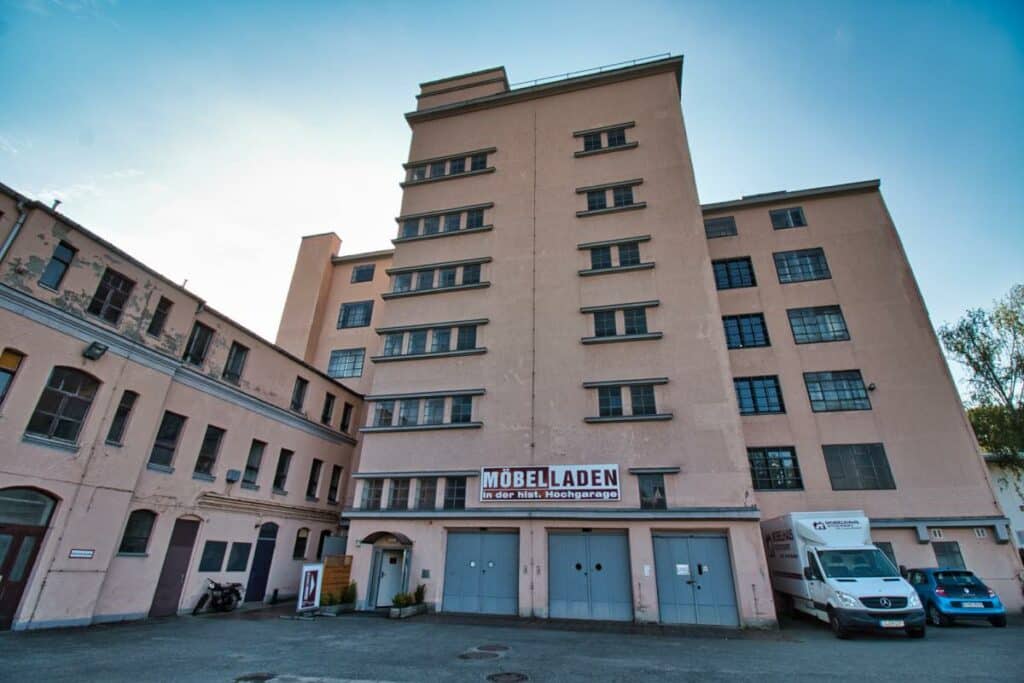
Stern garages (Museum of vehicle history)
The Stern garages are one of the oldest high-rise garages in Germany and were built in 1928 in the Bauhaus style in Chemnitz. At that time, Chemnitz was a rapidly growing industrial city and more and more citizens could afford automobiles. However, there was hardly any space in the narrow cities of the time. Therefore, the first elevated garages were planned. The Stern garages were even five stories high.
Later, Zwickauer Straße, on which the garage is located, was actually supposed to run behind the building. However, this did not come to pass. Therefore, the planned representative front is now the back. Today, the building houses a furniture store and the Museum of Saxon Vehicles. There some of the beautiful vehicles are exhibited, which also belong to the Chemnitz Moderne.
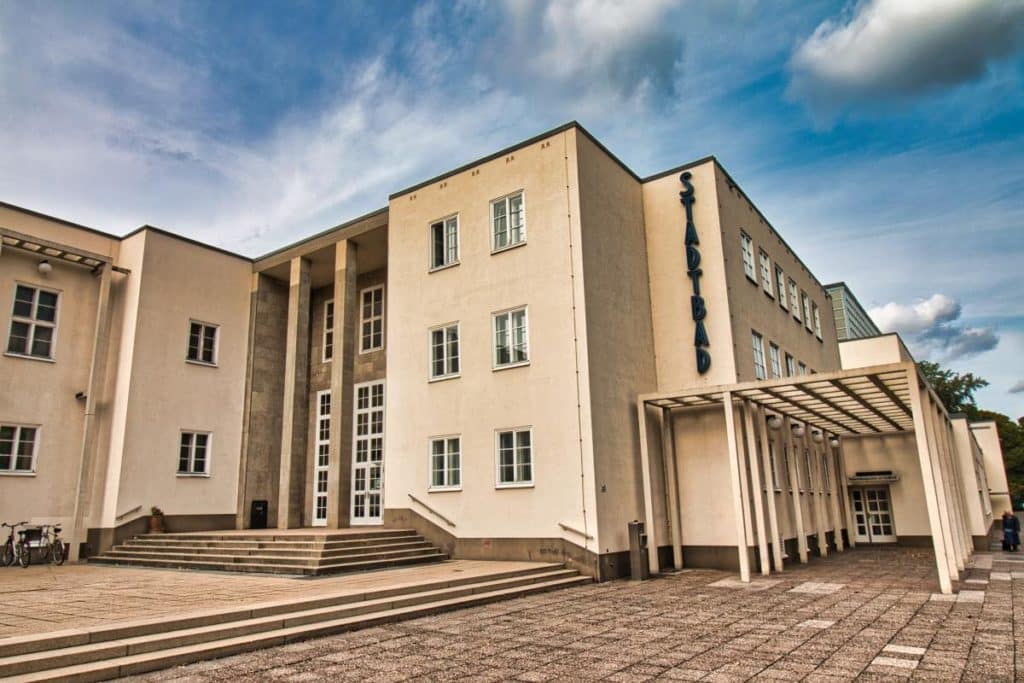
Municipal Bath
For me, it is one of the most beautiful modernist buildings in Chemnitz: the Stadtbad (Municipal Bath). Construction work on the baths began as early as 1929, but they were not opened until 1935, during the Nazi dictatorship. Designed by the Chemnitz city planning director Fred Otto, it was one of the most modern baths in Europe, not only in terms of architectural style. It has been renovated several times, but is often under water during floods. By the way, for 3.50 euros you can swim here just like in the 1920s.
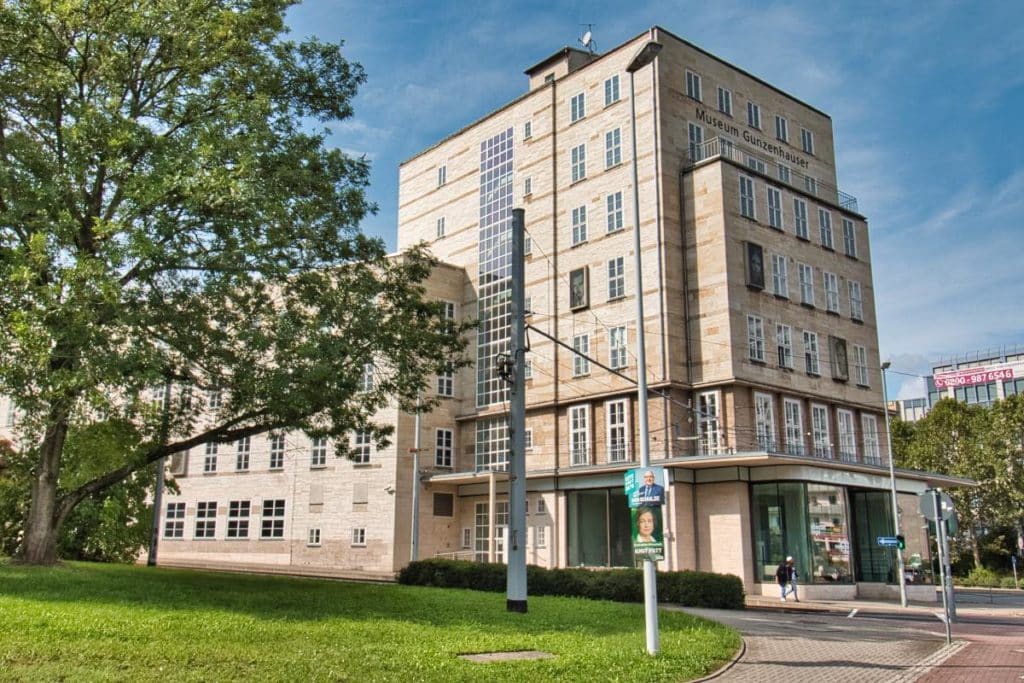
Gunzenhauser Museum
Another building designed by Fred Otto is the former savings bank on Falkeplatz. The seven-story building served as the headquarters of the Chemnitz Savings Bank from 1930. Since 2007, the building has housed the Museum Gunzenhauser. The Munich gallery owner and art collector Alfred Gunzenhauser bequeathed his collection of almost 2,500 works to the city of Chemnitz, as it provided a museum for them. About 300 works are permanently exhibited. Part of the collection are also almost 300 works by Otto Dix – this is the largest collection of his works. The entire 3rd floor of the museum is dedicated to him. Works by Ernst Ludwig Kirchner, Erich Heckel, Karl Schmidt-Rottluff, Gabriele Münter and Max Beckmann are also exhibited here.
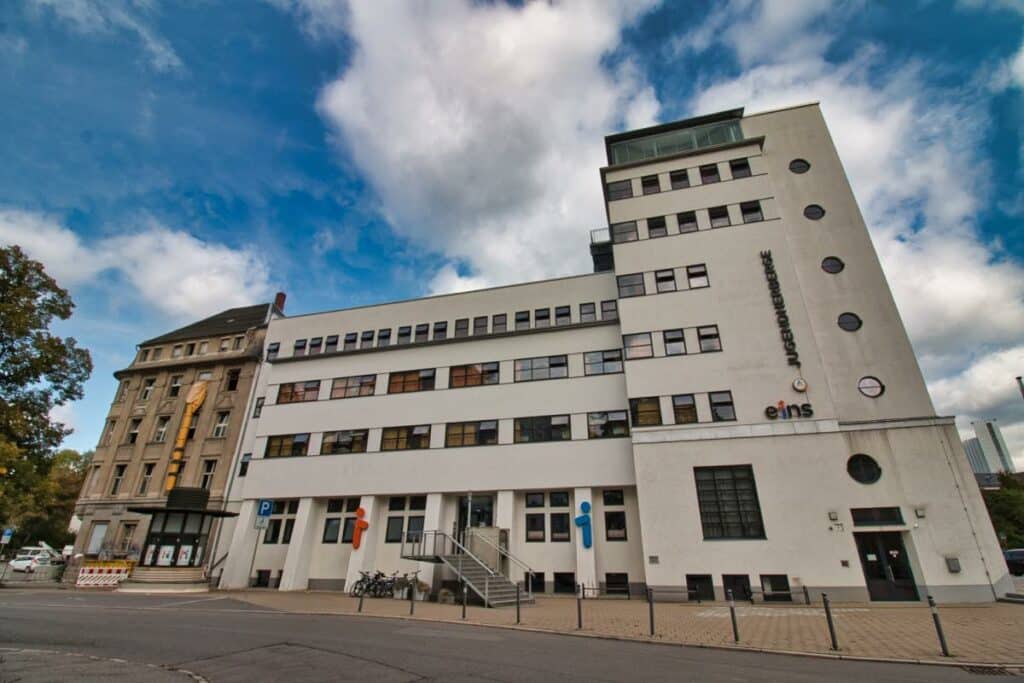
Youth Hostel Number One
The original substation for the Chemnitz streetcars was built as early as 1908. The modern building, in which you can spend the night in a youth hostel today, was created by rebuilding in 1924 and 1929 according to the designs of Friedrich Wagner-Poltrock. In GDR times, the building was the headquarters of the municipal energy supplier. As of 2009, the Chemnitz Modernist building was renovated and is now home to a youth hostel.

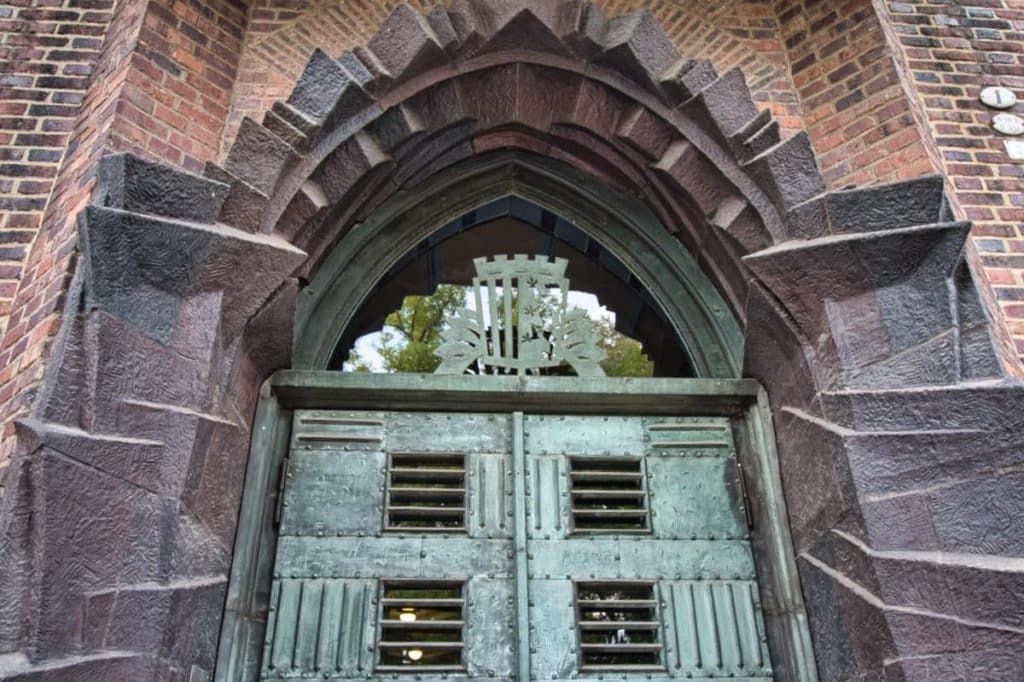
Industrial School
Friedrich Wagner-Poltrock was responsible for the construction of the Chemnitz Industrial School at today’s Park of the Victims of Fascism. After he won an architectural competition with the design in 1924, it was built from 1926 to 1928. He picked up on some of the most progressive design styles for schools that were emerging at the time and implemented them in the building. Some features of Expressionism can also still be seen on the exterior façade of the brick-clad building. The Chemnitz artist Gustav Schaffer produced a mural “Der schaffende Mensch” (The Creative Human), over six meters wide, which is now rehung in the building.
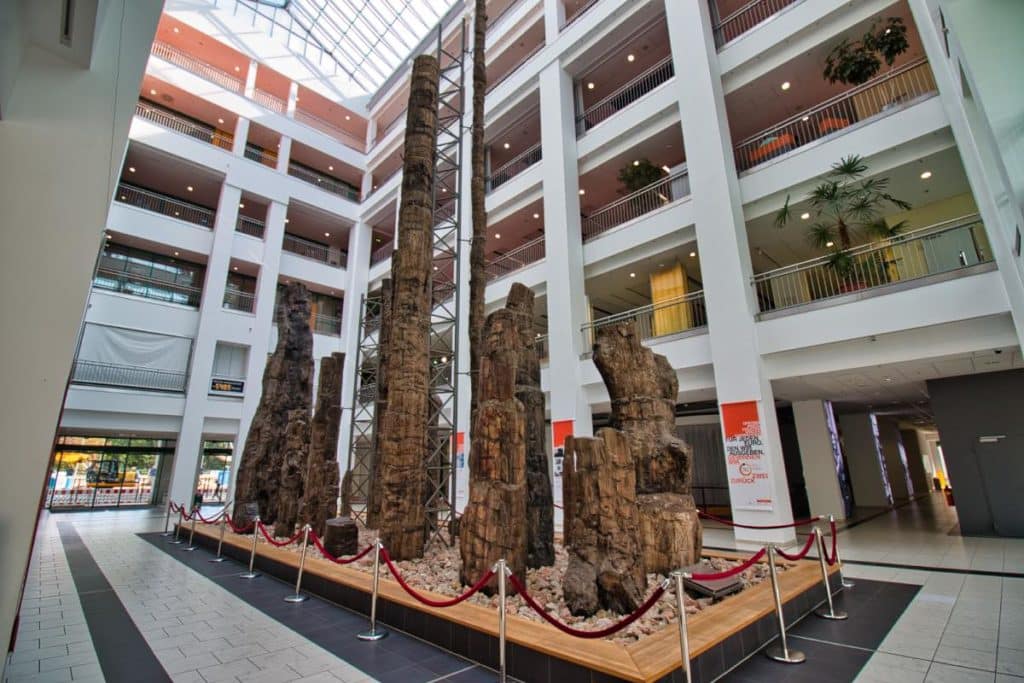
The Tietz
The Tietz was built in 1912/1913 according to plans by Wilhelm Kreis, who also designed the Hygiene Museum in Dresden and the train station in Meißen, among others. It was one of the most important department stores in the city. The Jewish owners were expropriated during the Nazi era and the Tietz director from Chemnitz, Hermann Fürstenheim, was even the first victim to be murdered by the Nazis during the November pogroms. The department store was destroyed during the war and only rebuilt by the GDR government in the 1960s. It then served as a Centrum department store until 2004, when it was closed and converted into a cultural department store.
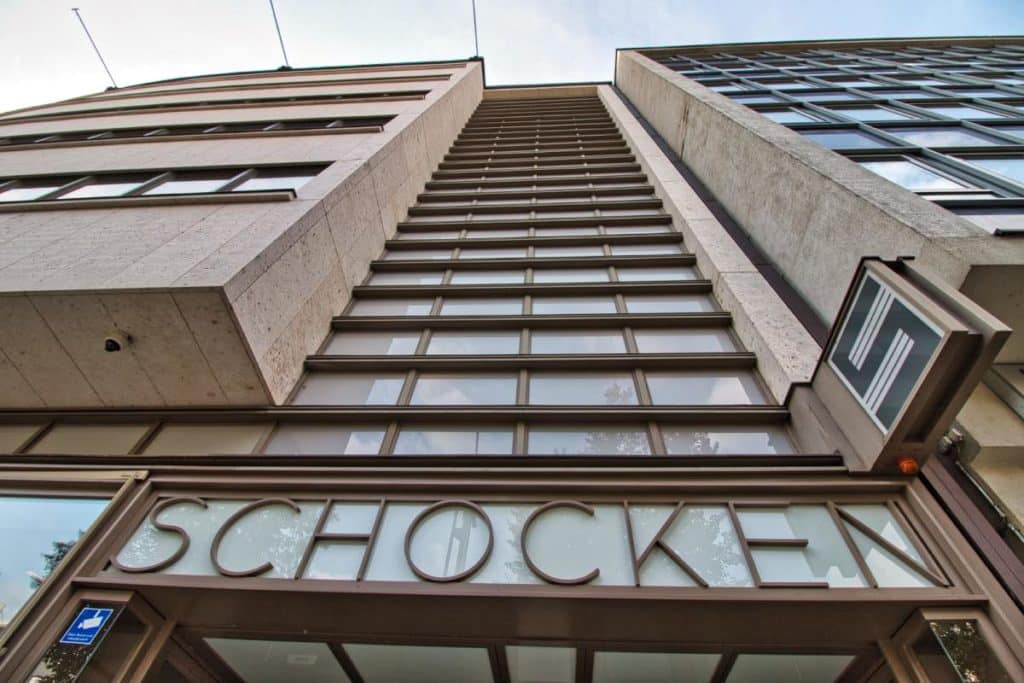
Schocken Department Store
The Schocken Department Store is one of the most beautiful department stores in Germany. It was built in 1930 and designed by the architect Erich Mendelsohn. There were several Schocken department stores, but the Chemnitz Schocken is one of the most beautiful. Today it houses the State Museum of Archaeology Chemnitz (smac) and could thus be saved from vacancy.
Hotel Chemnitzer Hof
The Hotel Chemnitzer Hof is a hotel building designed by Heinrich Straumer. Straumer was born in Chemnitz and designed many buildings in Berlin, the most famous of which is the Berlin Radio Tower at the Trade Fair. The Chemnitzer Hof was built in Chemnitz on Theaterplatz from 1929 to 1930. It is considered a work of moderate modernism. In the days when Chemnitz was still called Karl-Marx-Stadt, many dance events were held here.
Cammann Skyscraper
The first high-rise building in Chemnitz belonged to the Cammann weaving mill. Chemnitz was a textile city and the Cammann weaving mill was one of the largest in the city. With the administration building, the weaving mill wanted to give expression to this self-confidence. It was therefore only logical to commission a modernist architect like Willy Schönefeld with the planning of the building. The “skyscraper” was then built from 1923 to 1926 and today measures over 40 meters. The Cammann high-rise with its acute angles is reminiscent of Expressionism. Today, the building houses some offices.
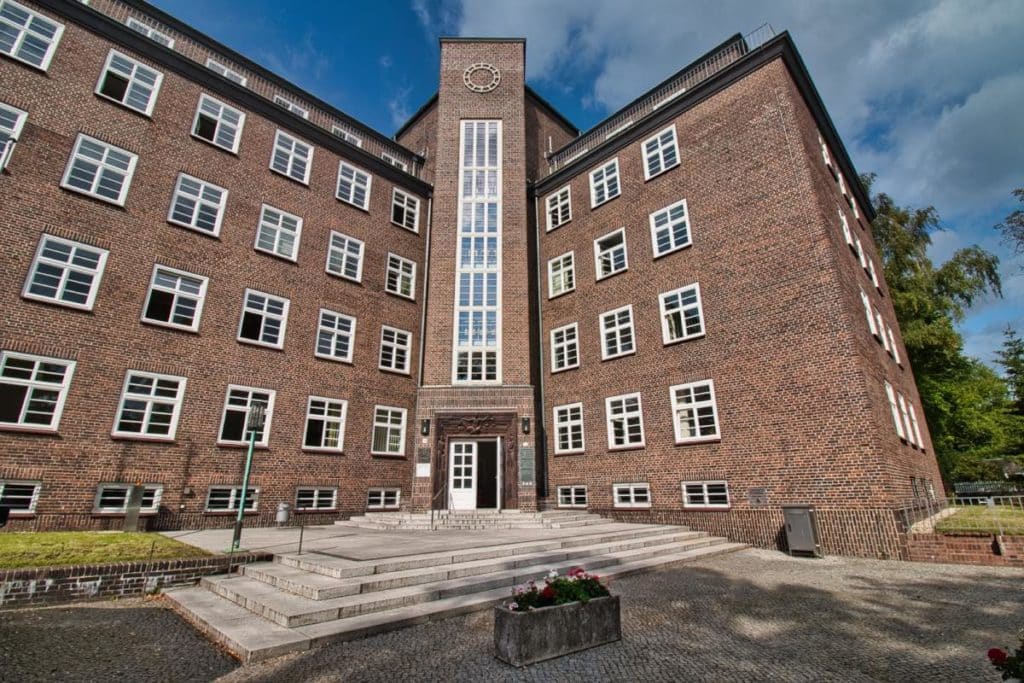
Chemnitz District Court at Kaßberg
The district court is also a Chemnitz Modernist building. However, so far I could not find out who built it. Because I passed here only by chance, when I looked at the Karl-Schmidt-Rottluff-Gymnasium next to it and then wanted to look at the Kaßberg prison. The clinker brick building was definitely built in the twenties and resembles the industrial school of Friedrich Wagner-Poltrock.
Kaßberg – Art Nouveau buildings
With industrialization, more and more factories were built in Chemnitz. This increased air pollution and the upper classes of Chemnitz wanted to move to an area with better air. Thus, a new settlement was created on the Kaßberg and with it one of the most beautiful neighborhoods with houses from the Wilhelminian and Art Nouveau periods. Even if these are not directly part of modernity, the buildings are just as closely connected with the citizens of the city and the industrial history. Particularly worth seeing during a walk are the Majolika houses (Barbarossa-Strasse 48-52), the Kyffhäuser Castle (Hübschmannstrasse 19) and the Fairy Tale Houses (Gustav-Adolf-Strasse 23-25).
Other interesting buildings in Chemnitz Modernism style
- Emden & Söhne warehouse (Glockenstraße 1) – Wagner-Poltrock was also responsible for this building from 1926.
- Max Feistel residence (Kesselgarten 3) – Max Feister was a perfect representative of Chemnitz Modernism and also implemented it in his own residence.
- Astra Headquarters (Altchemnitzer Straße 41) – industrial building built by Willy Schönefeld in the New Objectivity style.
- Nitsche, Jürgen (Author)


